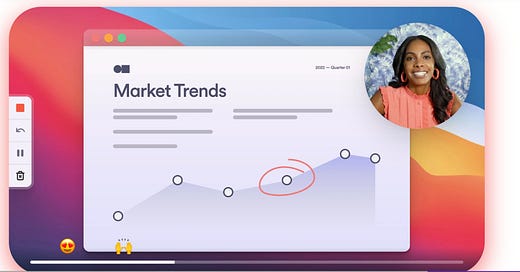Looming Larger
Last week Atlassian, the collaboration tool for developers and project managers, announced that it’s buying Loom, the video platform, for almost $1Bn in cash.
According to the NY Times, Atlassian is a rather dull software company, but with 4.5M members and a market cap of $50Bn perhaps being dull is not such a bad thing. Atlassian and Loom are further examples of organisations built with community at their very core gaining significant scale, traction and success.
The bulk of Atlassian’s growth came through word of mouth. They didn’t even have a sales team for a number of years and at the time of their IPO in 2015 they were only spending 19% of their revenue on sales and marketing, (for context, this is a fraction of what organisations like Salesforce, Workday and Marketo were spending*). They harnessed the enthusiasm their customers had for their product, kept building and developing to answer their needs, and as a result their customers couldn’t stop spreading the word about how great it was. They then opened up the software so that their customers could even develop their own solutions – if you can’t keep up with demand with your internal resources, why not let people do it for themselves? They now have a decentralised offering allowing their customers to solve their own needs. They were also early adopters of a phrase people are now widely using – “community everywhere” – where they aren’t limiting customers to only connect on their owned (excellent) platforms – you can find Atlassian communities in many different locations, both on and off line. Head of Global Community & Customer Advocacy at Atlassian, Stephanie Grice comments,
“You're keeping the pie really small if you're making everyone log in.” **
(If you’re interested in the Atlassian case study, then do check out Gareth Wilson’s excellent deep dive on them here.)
Loom is another product-led business built with community front and centre. CEO and Founder, Shahed Khan, explains that they baked a “reverence” for their customers’ input and feedback into the organisation at every level.
“We actually made it a company-wide habit really early on to round-robin our support tickets and to respond to every single question, compliment, and feedback that we found on Twitter. And that made it very obvious to our entire team how important interacting with our community was”. ***
Community wasn’t just the job of the customer service or marketing teams, it was up to anyone and everyone to respond to customer feedback or product issues. Still today, community is mentioned in all Loom job descriptions. Of course, they had to introduce more formalised processes, but the culture that employees need to listen to their customers is still very much the ethos. First launched in 2016, Loom is now used by 25M people and records over 5M business videos per month.
As Khan says, “I think it's pretty simple: Your users are the foundation of your product. The value they can provide on your product roadmap, your marketing, word of mouth growth, is honestly priceless.”
Khan saw that in the increasingly competitive landscape, community is the only way to ensure resilience and differentiate yourself.
“You could put products side by side, they could look identical, they'll be just as fast, but if it doesn't have that strong moat of a community than the other product, it's not as strong a solution.”
So here are two companies that are fully on-board with empowering and involving their customer communities and it’s clearly paying off. We weren’t surprised to see multiple mentions of human connection and adding human context, in their press releases around the acquisition.
As Mike Cannon-Brookes, CEO of Atlassian said, “teaming up with Loom helps distributed teams communicate in deeply human ways.”
We can’t wait to see what alchemy can be produced now they are to combine forces. We aren’t starting with base metals after all, so surely we are in for some gold on this one?
* https://www.intercom.com/blog/podcasts/scale-how-atlassian-built-a-20-billion-dollar-company-with-no-sales-team/ which was taken from Gareth Wilson’s piece mentioned.
***https://www.commonroom.io/blog/shahed-khan-loom-uncommon-conversation/
Gareth Wilson’s piece on Atlassian - https://community.inc/deep-dives/community-growth-atlassian
Click Worthy Content
An interesting insight on churn from Larry Cheng.
Co-Founder of Community Pros of London, Clare Sutcliff has recently launched her excellent podcast series, Bunch. Find her latest session with Notion Head of Community, Ben Lang here or wherever you get your podcasts from.
This is an excellent article from Amanda Lea Kaiser on how many onboarding emails you should be thinking of sending in the first few months of members’ signing up with you.
This newsletter is brought to you by www.customer-ization.com. We work with B2C brands to activate and empower customer communities to deliver growth, retention and satisfaction. To find out more why not book a call to explore how we can help you harness your customers’ enthusiasm and achieve a step change in your business outcomes.



